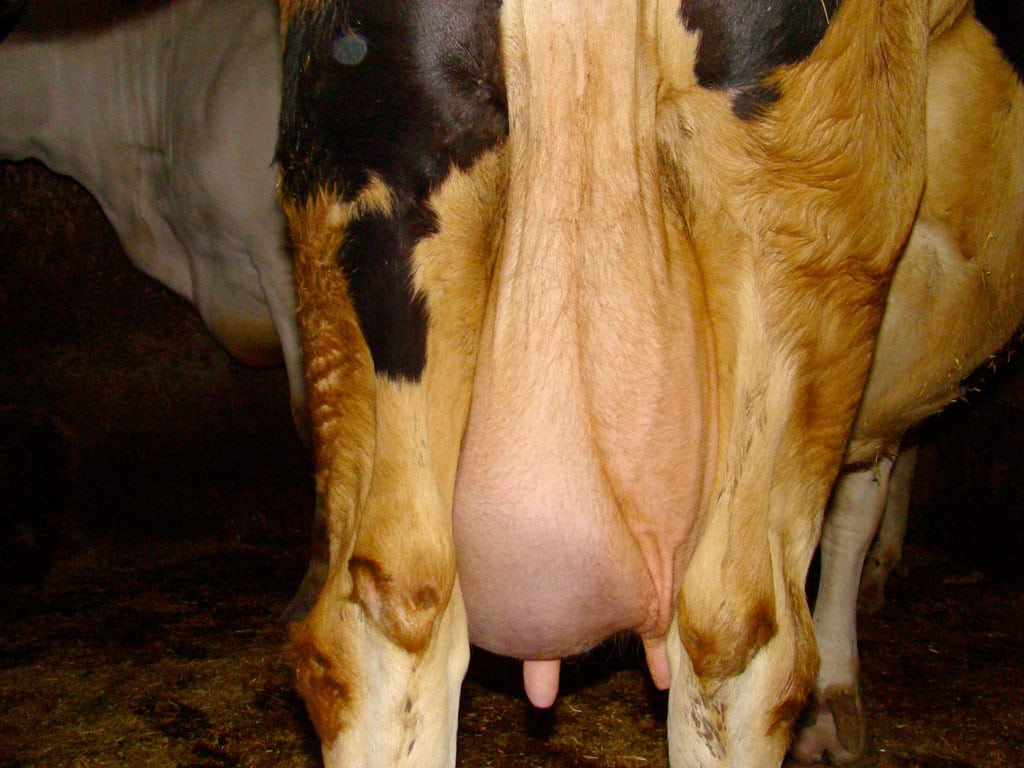The total cost of diseases depends on a variety of factors including veterinary expenses (time and pharmaceuticals), and economic losses due to decrease in productivity and an increased risk of culling.
Different studies have tried to estimate the cost of diseases by integrating all these variables.[1] [2]
For example, the transition period is a particularly vulnerable moment with 10-50% of cows falling sick to one or more of the following diseases: mastitis, metritis, ketosis, lameness, left displaced abomasum and retained placenta [3] . These diseases have heavy consequences on dairy farms.
In the table below you’ll see the estimated cost of these diseases obtained by integrating direct expenses and related losses and how much you could save by decreasing their occurrence rate by just 1%, in a 1000-cow herd.
| Average cost/case ($) | Savings for a decrease of 1 % occurrence /1000 cows/ year ($) | |
| Retained placenta | 269,5 | 2695 |
| Ketosis | 171,5 | 1715 |
| Displaced Abomasum | 535,5 | 5355 |
| Lameness | 226,5 | 2265 |
| Mastitis | 391 | 3910 |
| Metritis | 278,5 | 2785 |
| Dystocia (mild) | 133 | 1330 |
| Dystocia (severe) | 455 | 4550 |
The earlier these illnesses are identified, the fewer adverse effects they have, resulting in a smaller economic impact. For this reason, implementing prevention practices and deploying automated health monitoring promoting better health in your herd, is the key to maximizing your farm profitability.
The cost of difficult calving
Dystocias or difficult calvings do not only have adverse effects on the mother but can also negatively impact the calf. In a 2007 study conducted by the National Animal Health Monitoring System (NAHMS) on calf loss in North America, it was revealed that 15.9% of calves did not survive to weaning, and 8.1% of these losses occurred during calving and within the first 48 hours of life [4]. Dystocia, or difficult calving, is estimated to impose a substantial cost of approximately $400 million on the dairy and beef industries in the United States each year. These costs encompass the loss of both the mother and/or calf, the early culling of dams, reduced milk production, delayed rebreeding, and increased calf susceptibility to disease, resulting in slower growth.
According to another UK study the cost of a slightly difficult calving was estimated to be approximately £110 ($133), and of a seriously difficult calving between £350 and £400 ($425-486), depending on assumptions of the veterinary costs[5]. The major costs were associated with the labor required at the delivery, the increase of post calving disease incidence, disease treatment cost, the increase in the number of days open, and the costs associated with the deaths of cows and calves, and cow culling.
Given the impact of dystocia, and its relative frequency in dairy herds (between 3.8 and 11.8 % of calvings[6]) it is no wonder that any decrease in its occurrence brings leads to significant cost savings, ultimately increasing the economic performance of dairy farms.

Boost the health of your herd with automated detection.
In response to the growing demand for early illness detection and proactive animal care, a revolutionary solution has emerged: automated activity monitoring not only helps identifying cows in heat, but they also help identifying sickness in livestock. This advanced approach relies on sensors that continuously collect real-time data, utilizing 3D accelerometers and artificial intelligence algorithms to detect deviations and issue timely warnings to farmers.
This innovative system acts as a cost-effective measure by curbing veterinary expenses. By leveraging advanced sensors and data analytics, farmers can address potential health issues before they escalate, ensuring a robust and thriving livestock population while minimizing the financial burden associated with illness.
FarmLife® is a comprehensive solution that uses real time data from sensors mounted on collars. These are combined and analyzed with artificial intelligence to provide a holistic view of cow health status, reproductive performance, rumination, and activity behavior.
FarmLife® offers several services using only one sensor that helps farmer by:
- Improving Heat Detection Rate and help reduce the use of Fertility programs.
- Decrease your Culling Rate by helping you detect sick cows sooner. Reduce Stillborn and Mortality Rate by helping to monitor imminent calving and dystocia events.
- Improve Cow Comfort, Herd Health and Feeding Management.
- Monitor the impact of Heat Stress in your cows. Evaluate how your heat abatement strategies affect lying down time and the time budget of your cows.
- Monitor Herd Health Protocols, SOP’s and Task Compliance.
The integration of information such eating time, rumination, activity, reproduction and heat stress effectively allows to have a complete picture of cow’s health in real time at all times, making FarmLife® a precious ally for the management of your herd.
[1] Dolecheck K, Bewley J (2018) Animal board invited review: Dairy cow lameness expenditures, losses and total cost, Animal 12.
[2] Bruijnis MRN et al (2010) Assessing economic consequences of foot disorders in dairy cattle using a dynamic stochastic simulation model, J Dairy Sci 93
[3] Mohammad W. Sahar, Annabelle Beaver, Marina A. G. von Keyserlingk, and Daniel M. Weary (2020) Predicting Disease in Transition Dairy Cattle Based on Behaviors Measured Before Calving, Animals (Basel)
[4] https://swnydlfc.cce.cornell.edu/submission.php?id=1332&crumb=dairy%7C1
[5] Mc Guirk BJ et al (2007) Economic cost of difficult calvings in the United Kingdom dairy herd, Vet Record 161-20
[6] National Animal Health Monitoring System (NAHMS), study conducted in 2007 (https://www.aphis.usda.gov/animal_health/nahms/dairy/downloads/dairy07/Dairy07_is_CalvingInt_1.pdf)

